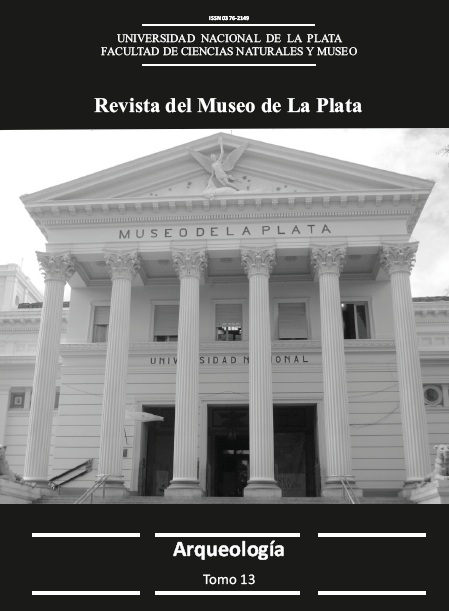Aportes de la dendrocronología al estudio de la evolución del caldenar pampeano durante la ocupación ranquelina
Keywords:
Ranqueles, Caldenal Evolution, Human Impact, Environmental Impact,Abstract
The geographical analysis of the Ranqueline occupation in the north of the Dry Pampa shows that the calden forest zone may have been the main attraction for the installation of its chiefdoms. As such, it is meaningful to study the relationships between the Ranqueles subsistence strategies and the changes produced in the calden forest. We present here a strong contribution from dendrochronological studies to the identification of such changes, interrelated with the information obtained from archaeological records and written documentation about this area. The calden tree (Prosopis caldenia) fits well with dendroecological studies, because it has well defined annual rings and its radial growth is sensitive to disturbances such as changes in forest density, fire, droughts, floodings, etc. We present here the results of the analysis of 38 samples of this species that were extracted from a section of the calden forests located within the territory controlled until 1879 by the Baigorrita Ranquel chief. Because the oldest growth rings date back to 1742 ?few years before the Ranqueline chiefdoms began to settle in Dry Pampa-, it was possible to evaluate the impact of the native subsistence forms on the local forest ecosystems, before the advance of the colonization front began, at the end of the nineteenth century. Furthermore, the heterogeneous growing rings allowed us to consider the climate fluctuations between wet and dry periods, both of which may be correlate with written and photographic records.Downloads
Published
Issue
Section
License
La publicación en la RMLP se realiza bajo los términos de la licencia de uso y distribución Creative Commons BY-NC-SA 4.0 para Argentina (https://creativecommons.org/licenses/by-nc-sa/4.0/) que permite a terceros la distribución, la copia y la exhibición del artículo siempre que citen la autoría del trabajo, la publicación en la RMLP, número concreto y las páginas en la que encontraron la información. No se puede obtener ningún beneficio comercial y no se pueden realizar obras derivadas con fines comerciales que no autorice la editorial. Si se remezcla, transforma o construye sobre el material, deben distribuir sus contribuciones bajo la misma licencia que el original.
La puesta a disposición del artículo en la RMLP supone para los autores argentinos el cumplimiento de lo establecido en la Ley 26899 de Creación de Repositorios Digitales Institucionales de Acceso Abierto, Propios o Compartidos, del 13/11/2013 en su artículo 5º, en lo relativo a la obligatoriedad de facilitar en acceso abierto los resultados de investigaciones financiadas por agencias gubernamentales y de organismos nacionales de ciencia y tecnología del Sistema Nacional de Ciencia, Tecnología e Innovación.










